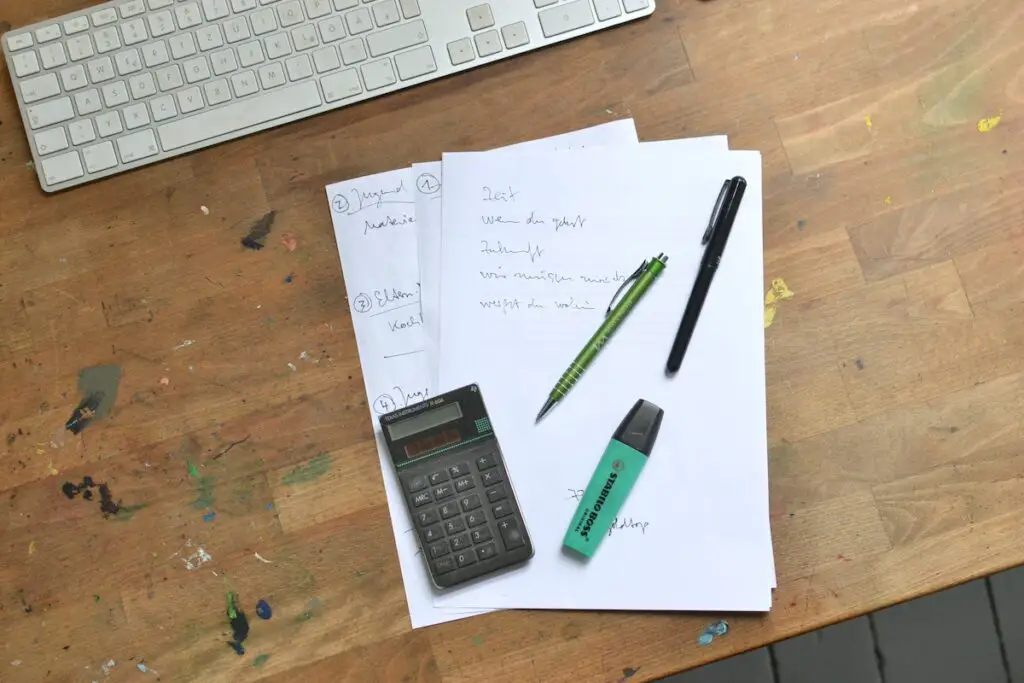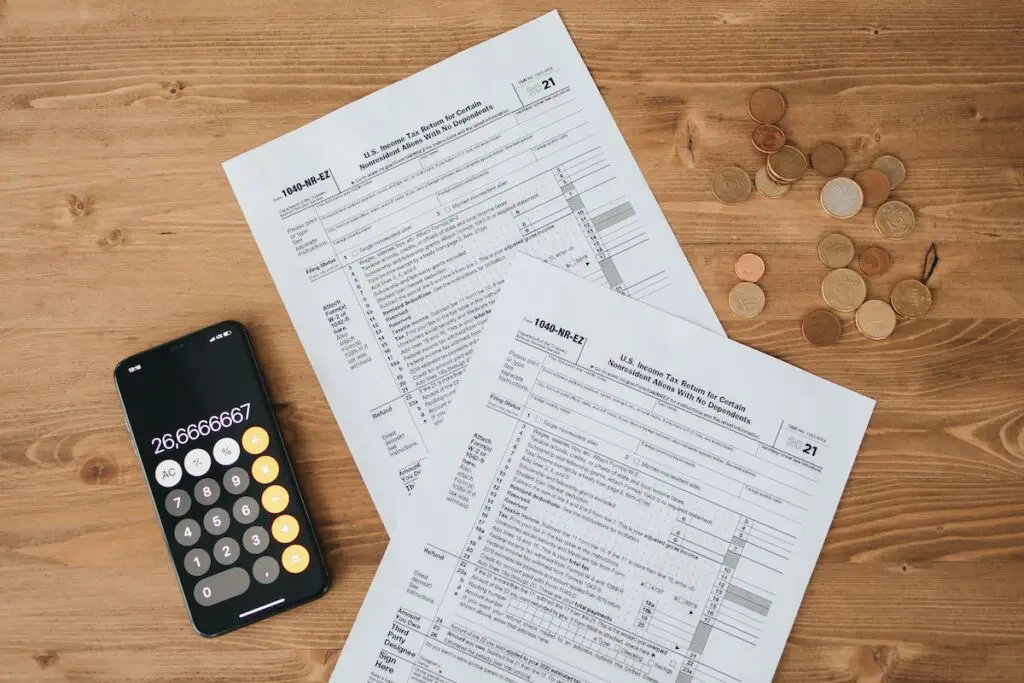Understanding the importance of leverage in forex trading is crucial for maximizing your trading potential. But what is the best leverage for $10 account?
So many beginners traders always wonder if they can start trading with just $10 and want to know the best leverage for $10 account, 1:1 is the best leverage for $10 account.
Contents
Whether you have a $10 account or a larger one, finding the best leverage can make a significant difference in your trading outcomes.
We will also discuss the benefits and risks associated with using leverage, providing you with valuable insights to make informed decisions.
So, let’s dive into the world of leverage and discover how it can amplify your trading opportunities and also if not use properly can harm your account.

Best Leverage for $10 Account
If you have a $10 trading account, it’s important to choose the right leverage option.
While there are various leverage ratios available, not all of them may be suitable for small accounts like yours.
It’s crucial to find leverage options that align with your account size and risk tolerance.
Recommended Leverage Ratios for Small Accounts
For a $10 account, it is generally recommended to use lower leverage ratios to manage risk effectively. A common recommendation is to opt for 1:10 or 1:20 leverage ratios.
These ratios allow you to control larger positions while limiting potential losses.
Optimizing Your Trading with the Right Leverage
Choosing the best leverage ratio involves finding a balance between maximizing potential profits and minimizing risks.
With a smaller account size, higher leverages can amplify both gains and losses.
It’s essential to consider your trading strategy, risk management techniques, and market conditions before deciding on the appropriate leverage ratio.
Impact of Different Leverages on Profits and Losses
Different leverages can significantly impact your trading outcomes. Higher leverages provide the potential for greater profits but also increase the risk of substantial losses.
On the other hand, lower leverages offer more conservative trading opportunities with reduced profit potential as well as limited exposure to significant losses.
To summarize:
- Choose suitable leverage options based on your account size.
- Consider using lower leverage ratios like 1:10 or 1:20 for small accounts.
- Find a balance between maximizing profits and managing risks.
- Understand how different leverages can affect both gains and losses.

Setting Realistic Goals for Your $10 Account
Best leverage for $10 account, let’s see how setting realistic goals is crucial when starting with a small account balance of just $10.
It’s important to have achievable expectations and understand that growing a small account takes time and patience in the forex trading world.
Learn How to Set Achievable Goals
To set realistic goals, it’s essential to have a clear understanding of your risk tolerance and trading style. Consider the following strategies:
- Money Management: Determine how much you are willing to risk per trade based on your account size. This will help protect your capital and prevent excessive losses.
- Profit Target: Set a specific profit target for each trade or series of trades. This will give you a clear idea of what you aim to achieve and help you stay focused on your goals.
- Small Amount, Big Idea: Even though $10 may seem like a small amount, it doesn’t mean you can’t grow it over time. Focus on consistent gains rather than aiming for huge profits right away.
Understand the Importance of Realistic Expectations
It’s crucial to manage your expectations when trading with a small account:
- Loss Limit: Determine the maximum amount you are willing to lose before exiting a trade. This will help prevent emotional decision-making and protect your account from significant drawdowns.
- Example: Let’s say you set a loss limit of 5% for each trade, which means if the trade goes against you by 5%, you exit the position automatically.
Discover Strategies to Grow Your $10 Account Over Time
Growing a small account requires patience and discipline:
- Consistency is Key: Focus on making consistent gains rather than trying to double or triple your account overnight.
- Compounding Profits: Reinvesting your profits can accelerate the growth of your account over time as long as it aligns with proper risk management principles.
Remember, setting realistic goals is essential when starting with a small account.

Understanding the Best Forex Leverage for Beginners
Best leverage for $10 account, as a beginner trader in the forex market, it’s important to understand the concept of leverage and how it can impact your trading experience.
Let’s dive into the best forex leverage options for beginners, keeping in mind their risk appetite and potential losses.
Lower leverages that suit beginners’ risk appetite
For beginners with a $10 trading account, it’s crucial to start with lower leverages.
These lower leverages, such as 1:10 or 1:20, allow traders to control larger positions with a smaller amount of capital.
This means you can trade larger volumes without risking too much of your initial investment.
Managing potential losses effectively with lower leverages
Lower leverages provide an added advantage. By using a lower leverage ratio, you limit the amount of capital at risk per trade.
This helps protect your account from significant drawdowns and allows you to stay in the game even if some trades don’t go as planned.
Gradually increasing leverage as you gain experience
As you gain more experience and confidence in your trading abilities, gradually increasing leverage can be beneficial.
However, it’s essential to do this incrementally and cautiously.
Increasing leverage too quickly can expose you to higher risks that may result in substantial losses.
To summarize:
- Lower leverages like 1:10 or 1:20 are suitable for beginners.
- They help manage potential losses effectively by limiting capital at risk.
- Gradually increasing leverage should be done cautiously as experience grows.
Remember, understanding the best forex leverage for beginners is crucial for managing risks and protecting your trading account.

Exploring the Potential Growth of a $10 Forex Account
Forex trading can be an exciting venture, even if you’re starting with just a $10 account. By strategically leveraging your trades, you have the potential to grow your account over time.
Best leverage for $10 account, let’s delve into some key aspects that can help maximize the growth of your $10 forex account.
Strategic Leveraging for Growth
One of the crucial factors in growing a small forex account is understanding how leverage works. Leverage allows you to control larger positions with a smaller amount of capital.
However, it’s important to use leverage wisely and manage your risk effectively.
Compounding Gains and Reinvesting Profits
To accelerate the growth of your $10 forex account, consider compounding gains and reinvesting profits.
When you compound gains, you reinvest your profits back into your trading account instead of withdrawing them.
This allows for exponential growth over time as each profit contributes to an increased trading position.
Varying Levels of Leverage
Different levels of leverage can impact the growth potential of your $10 forex account.
Higher leverage multiplies both gains and losses, so it’s essential to strike a balance that suits your risk tolerance.
It’s advisable for new traders to start with lower leverage until they gain more experience and confidence in their trading performance.
Consistent and Disciplined Trading
Consistency and discipline are key ingredients for success in forex trading. By sticking to a well-defined strategy, maintaining a trading journal.
And managing risk effectively, you increase the likelihood of growing your $10 forex account steadily over time.

Best Leverage Options for Micro and Cent Accounts
Micro and cent accounts are popular among traders who have limited capital to invest in the forex market. Using the best leverage for $10 account can really help.
These types of accounts allow traders to trade smaller positions, known as micro lots, which can be as small as 1,000 units of the base currency.
They typically range from 1:10 to 1:500. This means that for every dollar in your trading account, you can control a larger amount of money in the market.
Advantages and Disadvantages of Different Leverage Options
Different leverage ratios come with their own set of advantages and disadvantages. Let’s take a look at some key points:
- Lower Leverage (e.g., 1:10 to 1:100)
- Pros:
- Lower risk exposure due to smaller position sizes.
- Reduced margin requirements, allowing for more flexibility in managing trades.
- Cons:
- Limited profit potential compared to higher leverage options.
- Requires larger initial capital investment.
- Higher Leverage (e.g., 1:200 to 1:500)
- Pros:
- Increased profit potential through amplified gains on successful trades.
- Requires smaller initial capital investment.
- Cons:
- Higher risk exposure due to larger position sizes.
- Greater margin requirements, potentially leading to margin calls if not managed properly.
Choosing the Right Leverage Ratio for Your Goals
When deciding on the best leverage ratio for your micro or cent account, it is crucial to consider your risk tolerance and investment goals.
If you prefer a conservative approach with lower risk exposure, opting for a lower leverage ratio may be suitable.
On the other hand, if you are comfortable taking on higher risks in pursuit of greater profits, a higher leverage ratio may be more appealing.
It’s essential to strike a balance that aligns with your trading strategy and financial objectives.

Factors to Consider in Selecting the Right Leverage Ratio
How can best leverage for $10 account make you succeed? Choosing the best leverage ratio for a $10 trading account requires careful consideration of several factors.
These factors play a crucial role in determining the most suitable leverage ratio that aligns with your risk tolerance, trading strategy, and account size.
Risk Tolerance
Your risk tolerance is an essential factor when selecting a leverage ratio. It refers to your ability and willingness to withstand potential losses.
If you have a low risk tolerance, opting for a lower leverage ratio may be more suitable.
This allows for smaller position sizes and reduces the potential impact of market fluctuations on your account.
Trading Strategy
Your trading strategy also influences the choice of leverage ratio. Different strategies require different levels of leverage.
For example, if you are employing a long-term investment approach, a lower leverage ratio may be preferable as it offers more stability over time.
On the other hand, if you are engaging in short-term trades or day trading, higher leverage ratios can provide opportunities for quick profits.
Account Size
The size of your trading account is another crucial factor to consider when selecting a leverage ratio.
With a $10 account, it’s important to choose a low leverage ratio that allows you to open positions without risking significant portions of your capital.
A higher leverage ratio may expose your account to excessive risk and potential margin calls.
Market Volatility
Market volatility should not be overlooked when deciding on the appropriate leverage ratio. Highly volatile markets can lead to rapid price movements and increased risks.
In such cases, opting for lower leverage ratios can help manage risk effectively while still allowing for potential gains.
By considering these factors – risk tolerance, trading strategy, account size, and market volatility – you can make an informed decision about the best leverage ratio for your $10 trading account.

The Crucial Role of Choosing a Broker Carefully
Best leverage for $10 account depend on broker as well. Choosing the right broker is crucial.
It’s like picking the perfect teammate for an important game – you want someone reliable, trustworthy, and skilled.
Regulation, security, and transparency are key factors to consider when selecting a broker.
You want to ensure that your funds are safe and that the broker operates within legal boundaries.
A regulated broker follows strict guidelines set by financial authorities, giving you peace of mind.
Margin Requirements and Fees: Impact on Leverage Options
Different brokers have varying margin requirements and fees, which can significantly affect your leverage options.
Margin refers to the amount of money required to open a position in the market. Higher margin requirements mean you need more capital to trade with leverage.
It’s essential to understand how margin works and choose a broker with reasonable requirements that align with your trading strategy and risk tolerance.
High fees can eat into your profits, so finding a broker with competitive rates is advantageous.
Reliable Brokers for Small Accounts
While some brokers cater primarily to professional traders or those with substantial capital.
There are reliable options available for traders starting with smaller accounts.
These brokers understand the challenges faced by beginners or those with limited funds and offer tailored solutions.
Some brokers even provide educational resources and support specifically designed for small account holders.
They may offer lower minimum deposit requirements or micro-lot trading options, allowing you to start trading with as little as $10.

Managing Risk in High Leverage Situations
To ensure you make the most out of your $10 account while using high leverage, it’s crucial to understand proper risk management techniques.
This means taking steps to protect your capital and minimize potential losses.
One effective technique is setting stop-loss orders, which automatically close a position if it reaches a certain predetermined price level.
By doing so, you can limit your losses and prevent your account from being liquidated. Best leverage for $10 account is always 1:1 and that will keep you very safe.
Position Sizing and Diversification
Another important strategy to mitigate risks associated with high leverage is through position sizing and diversification.
Position sizing refers to determining the appropriate amount of capital to allocate for each trade based on your risk tolerance.
It helps ensure that even if one trade goes against you, it won’t have a significant impact on your overall account balance.
Diversification involves spreading your investments across different assets or markets.
This approach helps reduce the concentration of risk in a single position or market.
By diversifying, you’re less likely to experience substantial losses if one particular investment performs poorly.
Protecting Capital While Maximizing Profit Potential
In high leverage situations, it’s essential to strike a balance between protecting your capital and maximizing profit potential.
This requires discipline and careful consideration when entering into many positions simultaneously.
While high leverage can amplify gains, it also amplifies losses, so it’s important not to get carried away.
One approach is to adopt a conservative stance by opting for lower leverage ratios. Although this may limit potential profits, it also lowers the risk of significant losses.
Maintaining a disciplined trading plan that includes specific entry and exit points can help protect your capital while still allowing room for profit potential.
Remember, managing risk is an ongoing process that requires continuous evaluation and adjustment as market conditions change.
By implementing these strategies and staying disciplined in your trading approach, you can navigate high leverage situations more effectively while safeguarding your account.
Best Leverage for $10 Account
Finding the Optimal Leverage Strategy for Your $10 Account
To determine the best approach to leveraging with your $10 account, it’s important to consider your individual circumstances and goals.
By combining the knowledge gained from previous sections, you can develop an optimal strategy that suits your needs.
Evaluate Different Strategies Based on Risk Appetite, Goals, and Trading Style
When deciding on a leverage trading strategy, it’s crucial to evaluate various factors such as risk appetite, goals, and trading style. Consider the following:
- Risk Appetite: Assess how much risk you are willing to take on. Higher leverage can lead to higher potential profits but also increases the risk of losses.
- Goals: Determine what you aim to achieve through leveraged trading. Are you looking for short-term gains or long-term investment growth?
- Trading Style: Consider your preferred trading style—whether you focus on technical analysis or fundamental analysis—and choose a strategy that aligns with it.
Consider Various Scenarios and Their Implications on Leveraging Decisions
To make informed leveraging decisions, it’s essential to consider different scenarios and their implications. Take into account:
- Margin Requirements: Understand the margin requirements of different leverage ratios. Higher leverage ratios require less margin but come with increased risk.
- Position Size: Calculate the appropriate position size based on your account balance and desired level of leverage.
- Liquidation Price: Determine the liquidation price at which your position will be automatically closed if prices move against you.
By evaluating these scenarios and their implications, you can make more informed decisions regarding leverage.
Combine Knowledge from Previous Sections to Develop an Optimal Strategy
Now that you have a solid understanding of managing risk in high-leverage situations and have considered various factors specific to your circumstances.
It’s time to combine this knowledge and develop an optimal strategy for leveraging with your $10 account.
Consider factors such as:
- Profitable Investment Opportunities: Identify potentially profitable investment opportunities through thorough research and analysis.
- Position Management: Implement effective position management techniques, including setting stop-loss orders and trailing stops to protect profits and limit losses.

Conclusion
In conclusion, finding the best leverage strategy for your $10 account requires careful consideration of various factors.
We have explored different aspects such as setting realistic goals, understanding leverage options for micro and cent accounts, selecting the right leverage ratio.
Choosing a broker carefully, managing risk in high leverage situations, and exploring the potential growth of a $10 forex account.
By taking these factors into account, you can make informed decisions to optimize your trading experience.
To ensure success with your $10 account, it is crucial to set realistic goals that align with your available capital.
Understanding the best forex leverage for beginners and considering factors like potential growth and risk management will help you navigate the market more effectively.
Remember to choose a reputable broker who offers suitable leverage options and prioritize risk management strategies to protect your investment.
FAQs
1. What is leverage in forex trading?
Leverage in forex trading allows traders to control larger positions with a smaller amount of capital. It amplifies both profits and losses by multiplying the exposure to price movements.
2. How do I select the right leverage ratio?
Selecting the right leverage ratio depends on various factors such as your risk tolerance, trading strategy, and available capital. It is generally recommended for beginners to start with lower leverages (1:10 or 1:20) until they gain more experience.
3. What risks are associated with high leverage?
High leverage can lead to significant gains but also carries substantial risks. It increases both profit potential and loss exposure. Traders must be cautious when using high leverages as even small market fluctuations can result in substantial losses.
4. Can I change my leverage ratio after opening an account?
The ability to change your leverage ratio may vary depending on the broker you choose. Some brokers allow clients to adjust their leverage ratios within certain limits while others may require contacting customer support or opening a new account.
5. How can I manage risk in high leverage situations?
To manage risk in high leverage situations, it is essential to implement effective risk management strategies. This includes setting stop-loss orders, diversifying your portfolio, using proper position sizing techniques, and continually monitoring the market for potential changes.






Leave a Reply